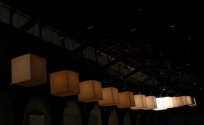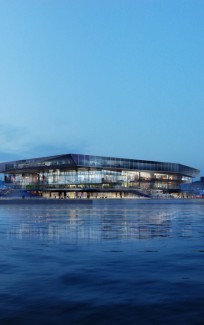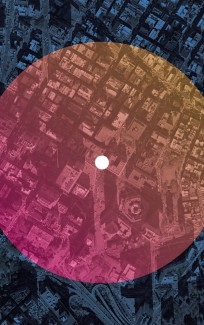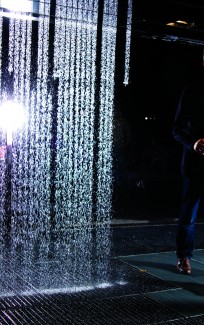Internet shelters in a smart city

Invisible Islands allow anyone to create a localized data overlay in public space.
How can we explore the contact between the physical and virtual in the urban landscape? How can we find privacy in a world of network-wide surveillance? Sébastien Pierre looks for answers – both here and in his project Invisible Islands that is presented at the Media Architecture Biennale 2014.
Architecture has never been exclusively about creating buildings, or creating a bridge between fine arts and engineering. At its very essence, architecture is about creating and changing habits. By shaping buildings, or objects, or spaces, we influence their uses and open the way to societal change. Surrounded by technology, our experience now goes beyond the physical world. Smartphones and wireless networks have dramatically changed the way we perceive, and interact, with our environment. Data now overlays our cities, affecting our relationship with the spaces, as well as each other — creating a dependency on technology, which we can experience ourselves simply by finding out that the network is unreachable in a specific area. This notion of technological dependency is crucial, as the Critical Engineering group[1] puts it “any technology depended upon [is] both a challenge and a threat.” In a context where these very networks are the vehicle for mass surveillance of citizens, the questions of ownership and network control become critical issues. Invisible Islands The Invisible Islands project investigates the contact points between the physical and the virtual in urban landscape. By creating physical bridges that allow citizens to share information publicly, but access privately, they open the question of using the physical urban space as a communication layer for information.
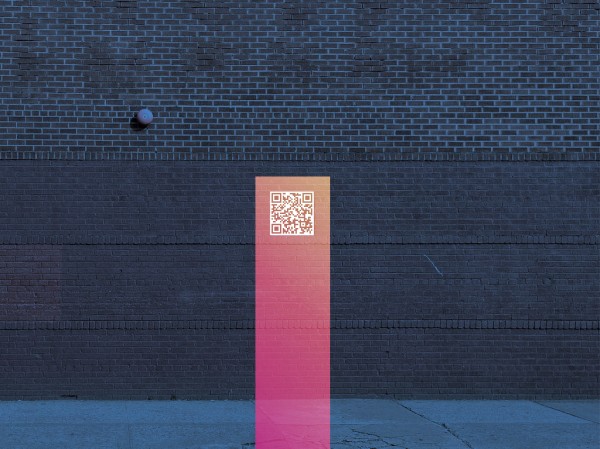
Invisible Islands create a network anchored to a specific location, disconnected from the Internet.
The Islands are designed to create short-range wireless networks anchored in the physical space. By tying information to a specific physical location, disconnected from the Internet, the Islands spaces are naturally sheltered from network-wide surveillance. Based on low-power commodity hardware and open-source software, the Islands can be easily installed and deployed by any citizen — allowing anyone to create a localized data overlay in the public space. Instead of depending on corporations and complex infrastructures, the Islands offer a way for anyone to create a space to share openly with the local community while ensuring that privacy is fully respected. As such, the Islands become an active part of the information fabric in the smart city, putting the citizen in the role of the architect, creating and opening new data spaces that can in turn change the way people interact, perceive and experience their environment.
You can learn more about the project on www.invisibleislands.org and learn more about Sébastien at www.sebastienpierre.ca
[1] The Critical Engineering Manifesto — www.criticalengineering.org
